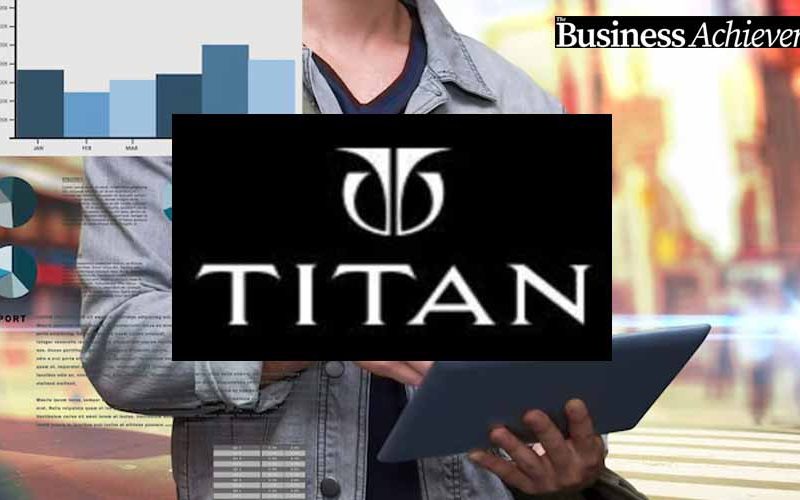Learn how Titan’s strategic expansions and premium brand focus are setting the stage for long-term growth
Titan Company Ltd reported a mixed performance for Q2FY2025. While revenue showed robust growth, profitability faced pressures due to changes in custom duties and shifts in the product mix. The net profit for the quarter ending in September 2024 saw a 23% decline, dropping to ₹704 crore from ₹916 crore in the same quarter last fiscal year. This figure fell short of market expectations, which anticipated a net profit closer to ₹990 crore. Despite strong income growth, cost pressures and reduced margins impacted overall profitability.
Revenue Growth and EBITDA Decline
Titan’s total income for Q2 rose by 26%, reaching ₹13,660 crore, up from ₹10,837 crore year-on-year (YoY). This increase highlights a steady demand across its major segments, especially in the jewelry and watches businesses. However, the company’s EBITDA (Earnings Before Interest, Taxes, Depreciation, and Amortization) slipped by 14.7%, down to ₹1,188 crore from ₹1,392 crore YoY. Consequently, the EBITDA margin contracted to 8.7% from 12.8%, pointing to rising operational costs and the impact of lower average selling prices in certain segments.
Profit before tax also saw a significant decline, slipping by 24% to ₹948 crore. This drop was primarily attributed to the reduction in custom duties, which affected pricing strategies in key segments. While this change revived consumer interest due to a temporary dip in gold prices, it also trimmed profitability margins.
Jewelry Segment Performance
Jewelry remained the largest contributor to Titan’s revenue, accounting for substantial growth in Q2. Total income in this segment rose by 26% over the same period last year, reaching ₹10,763 crore. The India business alone grew by 25%, showing strong domestic demand. The jewelry segment recorded an EBIT (Earnings Before Interest and Taxes) of ₹932 crore, with a margin of 8.7%. However, adjusting for the custom duty reduction, EBIT for Q2FY25 came in at ₹1,222 crore, yielding an improved margin of 11.4%.
The reduction in custom duty temporarily cooled off gold prices, driving a “gold rush” among consumers that extended into mid-September. This surge was characterized by double-digit growth in both buyer volume and average selling prices. Titan capitalized on this momentum by expanding its retail footprint, opening 11 new Tanishq stores, 12 Mia stores, and 1 Zoya store in India.
Watches & Wearables Segment
Titan’s watches and wearables division displayed strong growth, with total income reaching ₹1,301 crore, marking a 19% increase YoY. The domestic market mirrored this trend with a similar 19% growth rate. EBIT for the segment stood at ₹194 crore, resulting in a margin of 14.9%. The analog watch category showed particularly impressive performance, with revenue jumping by 26% over Q2FY24, largely driven by Titan’s flagship brand, which grew by 32%.
Premium brands gained popularity, as shown by Helios, which recorded a remarkable 43% growth in retail sales over the same period last year. However, the wearables sub-segment faced challenges, with revenue slipping by 13% due to lower average selling prices. Titan responded to these trends by adding 34 new stores during Q2FY25, including 18 new Titan World outlets, 14 Helios stores, and 2 Fastrack locations.
Eyecare Segment
Titan’s Eyecare division also reported growth, though at a more modest pace. Total income for the quarter reached ₹201 crore, reflecting a 7% increase YoY. EBIT for this segment stood at ₹24 crore, with a healthy margin of 11.9%. Frames and lenses experienced solid volume growth, indicating rising consumer interest in this product category. Seasonal factors led to a dip in sunglasses volumes, yet sales of international eyewear brands surged by 53% over Q2FY24.
The Eyecare business ramped up promotional activities, leading to a double-digit increase in advertising expenses compared to last year. The division expanded its footprint by adding 3 new stores under the Titan Eye+ brand.
Segmental Analysis and Strategic Expansion
Titan’s approach to segmental growth and expansion highlighted a diverse portfolio strategy aimed at tapping into different consumer demographics. Jewelry remains the core revenue generator, supported by watches, wearables, and eyecare. This diversified approach has helped Titan mitigate risk and capitalize on varied consumer preferences, especially as premium and branded products gain popularity.
The jewelry segment’s performance illustrated how custom duty adjustments can impact both consumer demand and margin structures. The watches and wearables segment continued to capture consumer interest in premium analog brands while facing headwinds in wearables due to declining prices. Meanwhile, Titan Eye+ maintained steady growth, showing potential for further market penetration.
Expansion and Store Network Growth
Titan continued to focus on expanding its retail presence across India. In Q2FY25, Titan opened a total of 60 new stores, reinforcing its footprint in both metro and smaller cities. The company added stores across its Tanishq, Mia, Zoya, Titan World, Helios, Fastrack, and Titan Eye+ brands. This strategic expansion aims to capture a larger share of the consumer market and cater to region-specific preferences.
These new stores are anticipated to contribute positively to Titan’s future revenue streams, as increased accessibility tends to drive brand loyalty and higher sales volumes. Titan’s strategic store openings align with its goal to reach underserved markets, building long-term growth through enhanced customer engagement.
Operational Challenges and Profitability Pressures
While Titan’s revenue growth remained impressive, the profitability challenges due to custom duty adjustments highlighted underlying operational challenges. Custom duty reductions affected the average selling prices in the jewelry segment, compressing margins despite high demand. EBITDA margin contraction across all segments underscores the need for Titan to optimize cost structures and enhance operational efficiencies to withstand external pressures.
Additionally, Titan faces a balancing act in its wearables segment, where lower prices have affected revenue. Adjusting pricing strategies in this category could be crucial for maintaining profitability in future quarters. Operationally, Titan’s increased marketing spend, especially in the Eyecare division, signals a shift towards capturing greater market share through aggressive advertising.
Outlook and Future Growth Prospects
Despite the shortfall in net profit, Titan’s steady revenue growth across core segments points to resilient demand in a competitive market. The jewelry segment’s performance, driven by strong domestic interest and favorable gold prices, remains promising. Titan’s focus on expanding its store network and tapping into premium consumer preferences across watches, eyewear, and jewelry positions the company well for long-term growth.
However, maintaining profit margins will require strategic pricing adjustments, especially in response to any future regulatory changes. Titan’s ability to leverage its brand reputation and capture premium market segments, particularly with Helios in the watches division and Tanishq in jewelry, remains a critical factor for sustainable growth.
As Titan advances, its continued investment in new store openings and targeted advertising could drive market penetration. Adapting to shifts in consumer behavior, especially the growing preference for branded and premium products, could provide the foundation for future revenue stability and margin expansion.
Titan’s Q2FY25 results underscore a robust revenue performance offset by margin pressures due to external factors like custom duty changes. The company’s diversified portfolio across jewelry, watches, wearables, and eyewear enabled it to capture demand in key categories, even amid profitability challenges. Titan’s strategic focus on expansion, premium brand positioning, and consumer engagement lays the groundwork for long-term growth.
Looking ahead, Titan’s profitability will hinge on effective cost management and optimized pricing strategies. By staying attuned to consumer trends and navigating regulatory impacts, Titan can build on its strong brand equity to achieve sustained growth and profitability across its diverse business segments.







